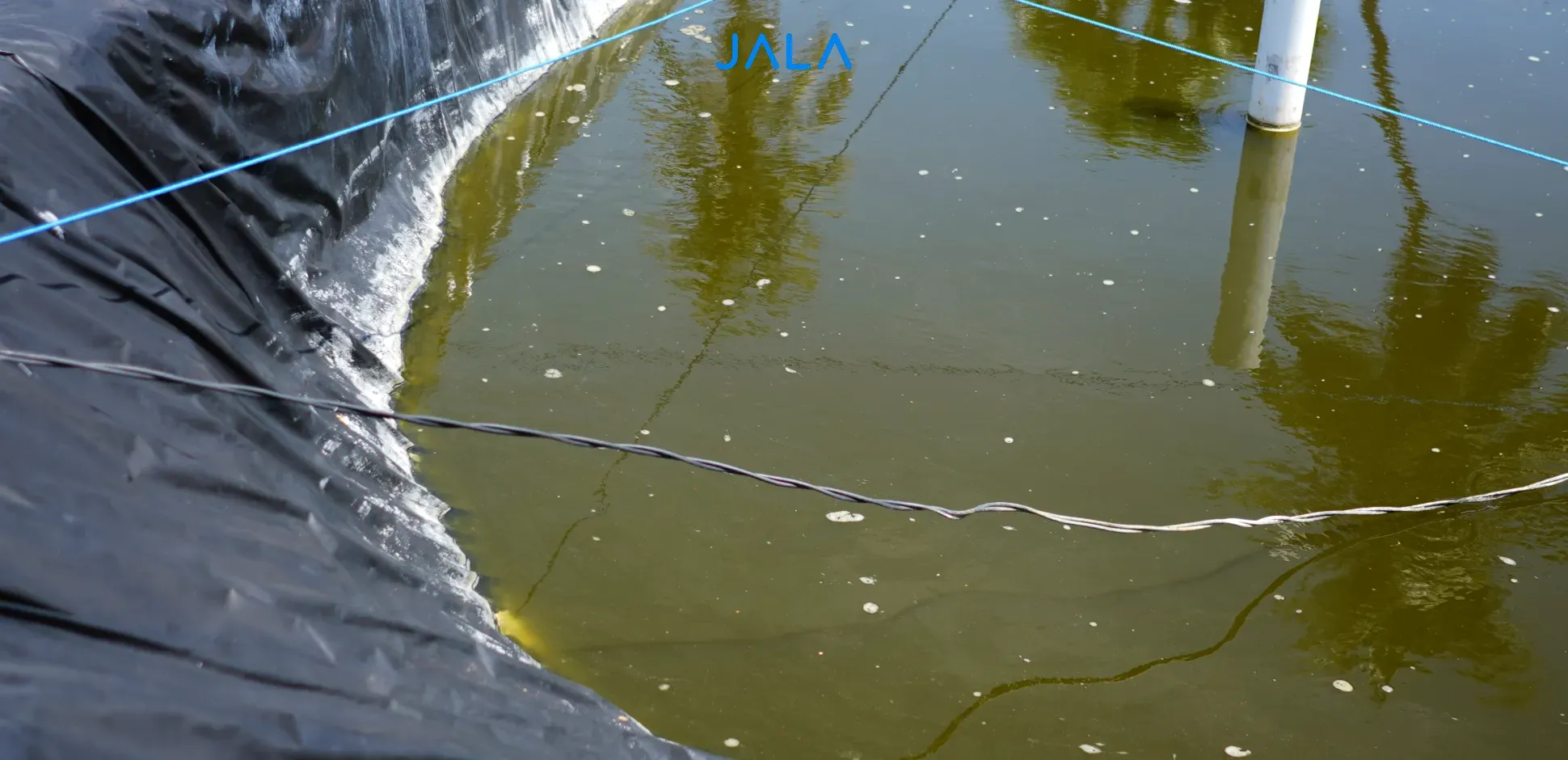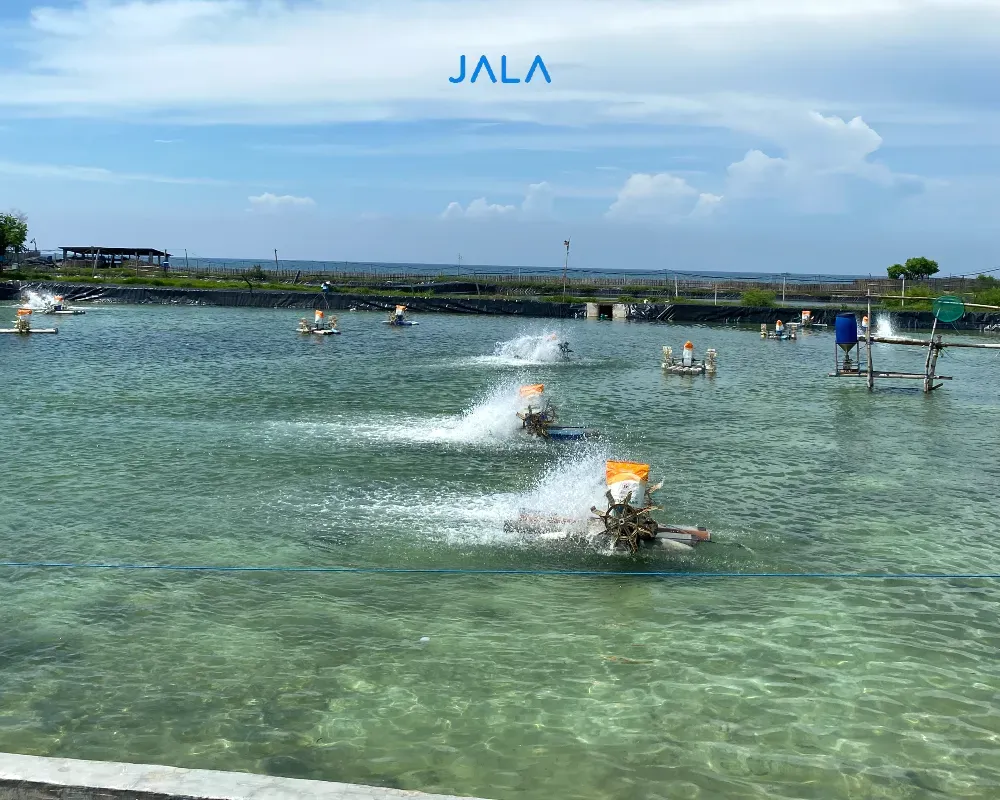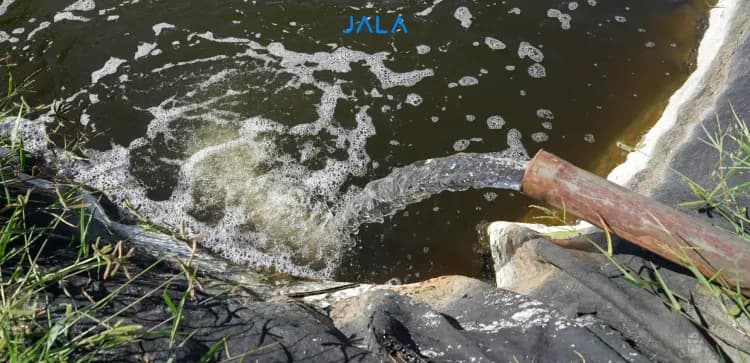
It is important for vannamei shrimp farmers to know how to clear turbid pond water when cultivating shrimp. Turbidity is one of the physical parameters of water quality, which is crucial in shrimp cultivation management.
Turbidity indicates the level of suspension in pond water. A high water turbidity indicates that the suspension in the pond is high as well. High suspension causes shrimp to be less able to grow optimally. In contrast, the lower the suspension, the higher the likelihood of shrimp growing optimally.
Therefore, farmers need to know how to clear turbid pond water when cultivating shrimp if it occurs at any moment. However, first of all, it is better to learn about the reasons for turbid pond water and how it affects shrimp.
What Causes Turbid Pond Water?
Turbid pond water is generally caused by high levels of suspended solids. These suspended solids are made up of an accumulation of several particles, including
- Biotic components, such as plankton (phytoplankton and zooplankton) and bacteria
- Abiotic components, such as sand, mud, and plankton shells
These particles cause water to lose clarity and thus become turbid. Pond water may turn brown to greenish and tends to thicken.
The Impact of Turbid Pond Water on Cultivated Shrimp
Shrimp rearing pond water can be said to be turbid if the brightness level is less than 30 cm. The potential for phytoplankton blooming and the emergence of excessive organic material will be higher.
Suspension solids in turbid pond water will increase if left untreated. This increase causes resultant suspension to become fine granules and can stick to the shrimp’s respiratory organ, making it difficult for them to breathe.
In addition, high turbidity also hinders sunlight from penetrating the water and reaching the pond’s bottom. In such a case, the sunlight is unable to support the phytoplankton photosynthesis process in the most optimal way. The dissolved oxygen produced will be low, whereas shrimp essentially use this parameter to support their growth.
However, on the other hand, an overly high water brightness level (more than 50 cm) is also undesirable since it suggests that there aren't enough plankton in the pond. The concentration of ammonia, nitrite, nitrate, and others will be unbalanced.
How to Fix Turbid Pond Water
 Given the harmful impact of turbid pond water, as a farmer you need to implement the right measure, which is by returning it to the ideal brightness level, namely 30-50 cm with brownish green color. This measure may improve water quality and remove toxic substances in pond water.
Given the harmful impact of turbid pond water, as a farmer you need to implement the right measure, which is by returning it to the ideal brightness level, namely 30-50 cm with brownish green color. This measure may improve water quality and remove toxic substances in pond water.
Depending on the water color and what’s causing the turbidity, there are several ways to improve pond water.
Dark green pond water
Slimy, dark green pond water may be caused by toxic phytoplankton. To overcome this, change the water by filling it in the afternoon and discarding it in the morning, then apply captan in the morning. As an alternative, you can install a filter to filter the water and avoid applying excessive fertilizer.
Dark brown pond water
Meanwhile, dark brown pond water may be caused by excessive minerals and feed as well as a deficiency of phytoplankton. You can apply urea fertilizer in the morning, apply 5 ppm of dolomite in the morning, and change the water by filling it in the morning and discarding it in the afternoon.
Alternatively, you can settle the particles by flowing the water into a pond that is bigger than the water channel. You may also filter the water, add organic matter, or add aluminum sulfate or magnesium sulfate.
Conclusion
It is important to consider water color and the cause of turbidity when learning about how to clear turbid pond water. Additionally, clearing pond water does not necessarily mean making the water crystal clear, but making the brightness level around 30-50 cm.
If the water is dark green, you can change the water, filter it, or apply treatment like captan. Meanwhile, if the water is dark brown, you can try to change the water, filter it, settle the particles, add organic materials, or apply treatment like urea and dolomite.
Every time you apply treatment, make sure to record it in JALA App, the shrimp farming management application from JALA. JALA App is #HeretoHelp you monitor and understand your shrimp farming conditions anytime and from anywhere.
Let’s use JALA App to cultivate productively and efficiently! Start now by accessing app.jala.tech or download the app on Google Play Store or App Store.






